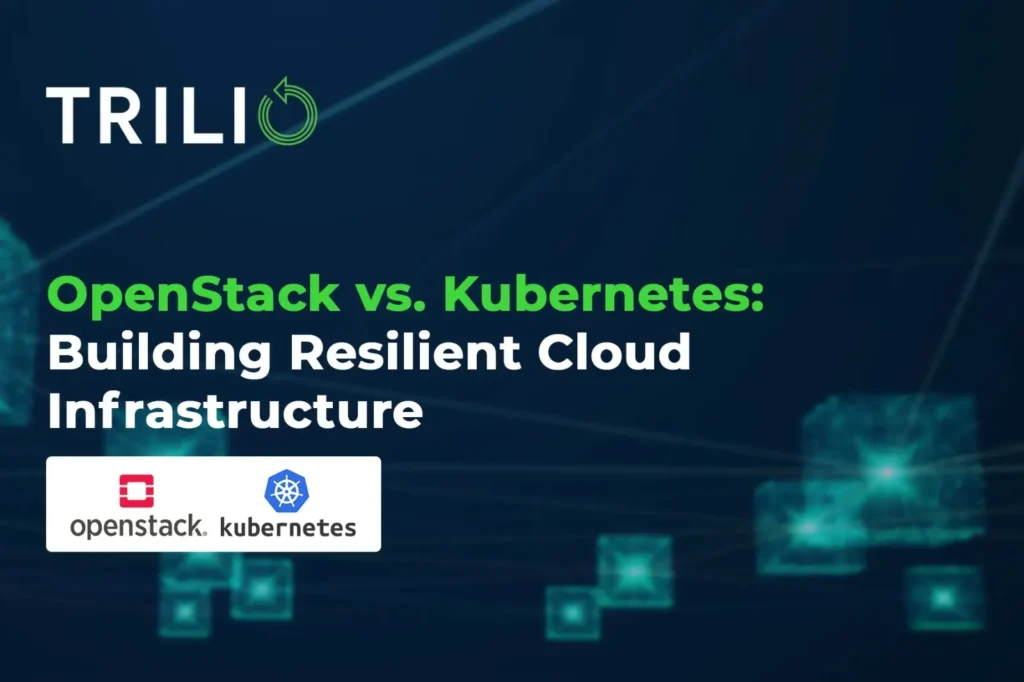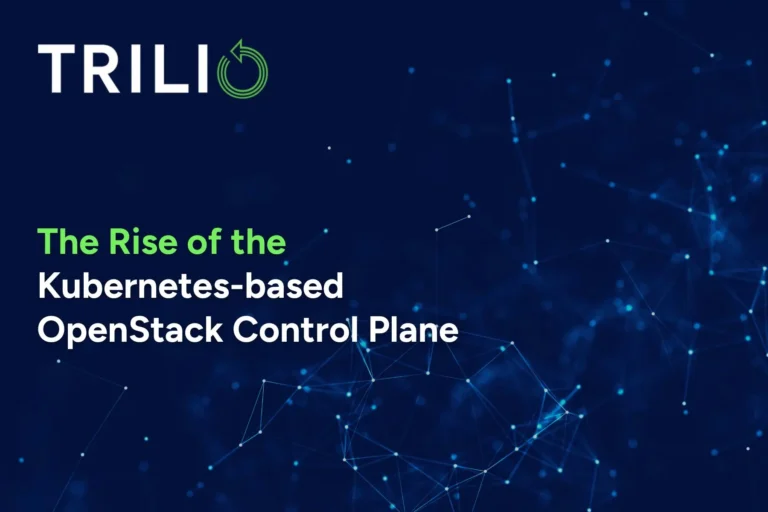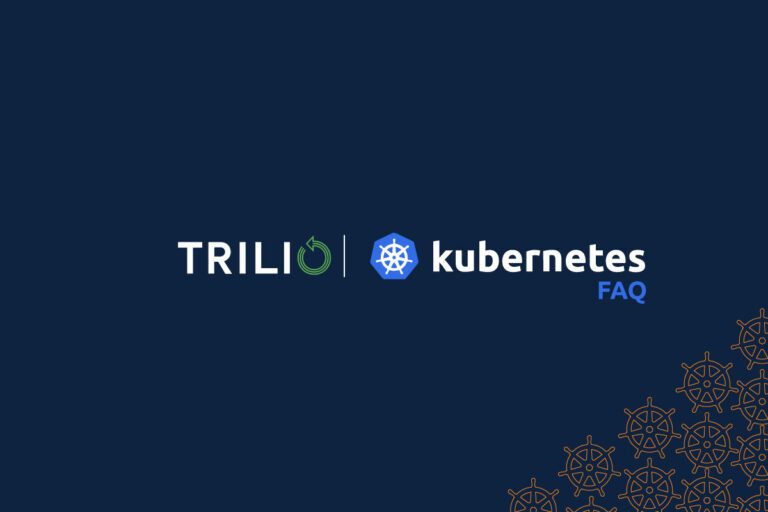In cloud computing, two platforms stand out: OpenStack and Kubernetes. OpenStack, an infrastructure-as-a-service (IaaS) platform, enables the creation and management of virtualized data centers that cater to diverse workloads. Kubernetes, a container orchestration platform, excels at managing large-scale, distributed applications, facilitating rapid deployment and scaling.
The OpenStack vs. Kubernetes debate often centers on which is superior, but both platforms possess unique strengths and serve different needs. The decision to adopt either, or both, depends on factors like organizational goals, infrastructure, and application requirements.
Given the frequency of cyber threats, organizations need to ensure that their data and applications are fortified against unexpected events. In this article, we dive deep into OpenStack and Kubernetes, uncovering their differences, strengths, weaknesses, and ideal use cases. We also discuss the vital role of data protection in maintaining business continuity and how to build a resilient cloud infrastructure that addresses modern challenges.
A Head-to-Head Comparison of OpenStack and Kubernetes
OpenStack and Kubernetes, while both designed for cloud infrastructure management, have distinct architectures and approaches.
OpenStack is a sprawling collection of projects that collectively implement a comprehensive IaaS platform. It uses virtual machines (VMs) as its fundamental building blocks. VMs emulate entire operating systems, providing complete isolation, which makes them ideal for running traditional applications that require dedicated resources. OpenStack’s modular architecture offers a wide array of services, including compute, storage, networking, and identity management, enabling organizations to build private or public clouds tailored to their specific needs.
Kubernetes, on the other hand, is a container orchestration platform. Containers are lightweight, portable units of software that package an application and its dependencies together. Unlike VMs, containers share the host operating system’s kernel, making them more efficient and faster to start. Kubernetes manages the deployment, scaling, and networking of containers, automating many of the complex tasks involved in running containerized applications.
Each platform brings unique strengths to the table. OpenStack’s mature ecosystem and extensive feature set make it a compelling choice for organizations seeking a comprehensive IaaS platform with granular control over their infrastructure. Kubernetes’ agility and scalability are particularly well-suited for cloud-native applications that need to adapt quickly to changing demands.
However, both platforms also have their limitations. OpenStack’s complexity can be daunting, requiring specialized expertise to manage and maintain. Kubernetes, while powerful, can have a steep learning curve and may not be the best fit for all applications.
The table below summarizes the key feature differences between OpenStack and Kubernetes.
Area | OpenStack | Kubernetes |
Architecture | VM-based | Container-based |
Core Strengths | Comprehensive IaaS platform with an extensive feature set | Agility, scalability, and automation for managing containerized applications |
Ideal Use Cases | Traditional applications, complex workloads, environments requiring granular control | Cloud-native applications, microservices architectures, rapid scaling situations |
Challenges | Complexity, steep learning curve | Potential overhead for simpler applications, less mature ecosystem than OpenStack |
The Recovery Imperative: Why Resilience Matters
Data is the lifeblood of organizations, so the importance of resilience cannot be overstated. Cyber threats, natural disasters, hardware failures, and human errors pose constant risks to business continuity. The potential consequences of data loss or downtime can be devastating, including financial losses, reputational damage, and even legal ramifications.
Ransomware, in particular, targets organizations of all sizes and industries. A successful ransomware attack can encrypt critical data, rendering it inaccessible and holding it hostage until a ransom is paid. The average cost of recovering from a ransomware attack is estimated to be in the millions of dollars, not to mention the intangible costs of lost productivity and customer trust.
To mitigate these risks, organizations need a robust ransomware recovery plan that includes comprehensive backup and disaster recovery (DR) solutions. A well-designed recovery plan ensures that your critical data and applications can be restored quickly and efficiently in the event of a disruption, whether you’re running OpenStack or Kubernetes.
In the context of the Kubernetes vs. OpenStack debate, data protection takes on added significance. OpenStack’s distributed architecture and Kubernetes’ dynamic nature introduce unique challenges when it comes to protecting your data and applications. Trilio’s application-aware data protection solutions are designed to address these challenges, ensuring that your cloud infrastructure remains resilient even in the face of adversity. By automating backup and recovery processes, Trilio helps you minimize downtime, protect your data, and safeguard your organization’s future, whether you’ve chosen OpenStack or Kubernetes for your cloud infrastructure. Schedule a demo to learn more.
Recovery Considerations
Both OpenStack and Kubernetes offer native mechanisms for data and application recovery. OpenStack’s Cinder component provides volume snapshots for persistent storage, while Kubernetes uses ReplicationControllers and StatefulSets to manage pod replicas. However, these built-in tools often fall short when dealing with complex, real-world recovery scenarios.
Recovery capabilities are a critical OpenStack vs. Kubernetes differentiator. OpenStack’s snapshots, while useful, might not capture the entire application state, leading to inconsistencies during recovery. Kubernetes replication mechanisms offer limited protection against data corruption or accidental deletion.
Additionally, neither platform offers comprehensive protection against ransomware attacks, which can encrypt data across multiple volumes or containers, rendering traditional recovery methods ineffective. In the face of such threats, a more robust, application-aware backup and recovery solution is essential.
Trilio overcomes the recovery limitations of both OpenStack and Kubernetes by offering agentless, application-consistent backups and granular recovery options that seamlessly integrate with both platforms. This ensures complete protection for your entire cloud environment, whether you’ve chosen OpenStack, Kubernetes, or a combination.
With Trilio, you can easily back up and restore entire applications, ensuring the complete and consistent recovery that is crucial for maintaining business continuity and minimizing downtime in the face of any disaster. By choosing Trilio, you’re choosing a partner who understands the unique data protection challenges in OpenStack and Kubernetes environments and is committed to empowering you to build truly resilient cloud infrastructure. Schedule a demo to learn more.
Factors for Choosing the Right Platform
There’s no one-size-fits-all answer to the question of whether to adopt OpenStack, use Kubernetes, or take a hybrid approach. The ideal choice depends on a multitude of factors specific to your organization’s needs and goals:
- Workloads: Consider your workload types. Are you primarily dealing with monolithic applications that would benefit from OpenStack’s VM-based isolation, or are you focused on microservices and cloud-native applications that thrive in the containerized environment of Kubernetes?
- Existing Infrastructure and Skillsets: Evaluate your current infrastructure and the expertise of your IT team. If you have a significant investment in legacy systems and a team well-versed in virtualization technologies, OpenStack might be a good choice. Conversely, if you’re embracing a DevOps culture and have experience with containerization, Kubernetes could be a natural fit.
- Scalability and Flexibility: Assess your scalability requirements. Kubernetes excels at horizontal scaling, making it ideal for applications with fluctuating workloads. OpenStack, while scalable, might require more manual intervention to adjust resources.
- Recovery Requirements and Risk Tolerance: As we’ve discussed, data protection and disaster recovery are essential considerations. If your organization has stringent recovery requirements and a low tolerance for downtime, it’s crucial to choose a platform that can be easily integrated with robust backup and recovery solutions, like Trilio.
- Community and Support: Both OpenStack and Kubernetes boast vibrant communities and extensive documentation. However, the level of support and resources available can vary. Consider the maturity of each platform’s ecosystem and the availability of third-party tools and services.
OpenStack vs. Kubernetes: Key Decision Factors
This table provides a quick at-a-glance summary of the key factors involved in choosing between OpenStack and Kubernetes.
Factor | Assessment Questions | OpenStack Considerations | Kubernetes Considerations |
Workload Types | Are your applications primarily monolithic or microservices-based? | Ideal for traditional, monolithic applications | Well-suited for microservices, cloud-native applications |
Existing Infrastructure | What infrastructure and tools are already in place? | Easier transition if you have existing virtualization infrastructure | Smoother integration if you have experience with containerization and DevOps practices |
Scalability Requirements | How important is rapid horizontal scaling? | Scaling requires more manual intervention | Excels at horizontal scaling, ideal for dynamic workloads |
Skillset | What expertise does your IT team possess? | Requires specialized knowledge in virtualization and networking | Requires expertise in containerization, orchestration, and cloud-native technologies |
Recovery Needs | How critical is data protection and disaster recovery? What are your RTO and RPO objectives? | Native backup and recovery tools may have limitations | Native backup and recovery tools may have limitations |
Community and Support | What level of community support and documentation do you require? | Mature ecosystem with extensive documentation and community support | Growing ecosystem with strong community support and increasing third-party tool availability |
Cost | What is your budget for implementation and ongoing maintenance? | Can be expensive due to hardware and licensing costs | Can be more cost-effective due to efficient resource utilization |
During your evaluation, it’s important to remember that data protection should be a core consideration. Be sure that your chosen platform integrates seamlessly with a comprehensive backup and recovery solution like Trilio. By prioritizing data protection, you’re not just safeguarding your critical assets—you’re also ensuring the long-term viability of your cloud infrastructure investment.
Still unsure about OpenStack vs. Kubernetes? Listen to our podcast episode on this topic to discover which platform is right for your organization.
Conclusion: Building a Future-Proof Cloud Strategy
The OpenStack vs. Kubernetes debate is less about choosing a winner and more about understanding which approach best aligns with your organization’s specific needs. Both OpenStack and Kubernetes offer powerful tools for building and managing cloud infrastructure, but their strengths and weaknesses cater to different use cases.
Whether you prioritize the comprehensive IaaS capabilities of OpenStack or the agility and scalability of Kubernetes, one thing remains clear: Data protection and disaster recovery should be a cornerstone of your cloud strategy. The risks posed by ransomware, data breaches, and other threats are simply too great to ignore.
Trilio, with its comprehensive data protection solutions for both OpenStack and Kubernetes environments, empowers you to build a resilient cloud infrastructure that can withstand the challenges of the modern digital world. By ensuring that your data and applications are always protected and recoverable, Trilio allows you to embrace the cloud with confidence, knowing that your critical assets are safeguarded against unforeseen events.
Schedule a demo and discover how we can help you fortify your OpenStack or Kubernetes environment, ensuring that your critical data and applications are always protected. With Trilio, you can embrace the cloud with confidence, knowing that your future is secure.
FAQs
Can I use both OpenStack and Kubernetes together?
Absolutely! Many organizations leverage both platforms, taking a hybrid approach. OpenStack can provide the underlying infrastructure, while Kubernetes orchestrates containerized applications on top. This combination allows you to take advantage of OpenStack’s mature IaaS capabilities while leveraging Kubernetes’ agility for modern, cloud-native workloads, making the most of the strengths of each.
Which platform is more secure: OpenStack or Kubernetes?
Security is a shared responsibility in both platforms. OpenStack’s modular architecture offers fine-grained control over security policies, while Kubernetes has robust security features like role-based access control (RBAC) and network policies.
Is Kubernetes replacing OpenStack?
No, Kubernetes is not replacing OpenStack. While Kubernetes has gained immense popularity for container orchestration, OpenStack remains a powerful IaaS platform with a broad range of use cases. The two platforms often complement each other, as mentioned earlier, creating powerful synergy.
How does the OpenStack vs. Kubernetes debate impact disaster recovery planning?
The choice between OpenStack and Kubernetes can significantly impact your disaster recovery strategy. Each platform has unique considerations for backup, replication, and recovery. It’s crucial to choose a data protection solution like Trilio that integrates seamlessly with your chosen platform or platforms to ensure a smooth and efficient recovery process.
Which platform is better for handling big data workloads?
Both OpenStack and Kubernetes can handle them, but the approaches differ. OpenStack provides robust support for Hadoop and other big data frameworks through its Sahara project. Kubernetes, on the other hand, offers flexibility and scalability through its ability to manage distributed, containerized data processing pipelines. The best choice depends on your specific big data requirements and the tools you’re using.




